
 i_need_contribute
i_need_contribute
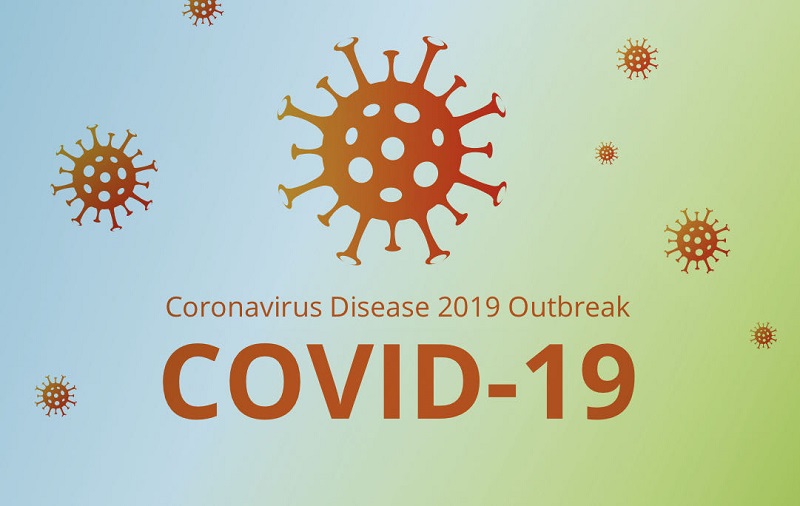
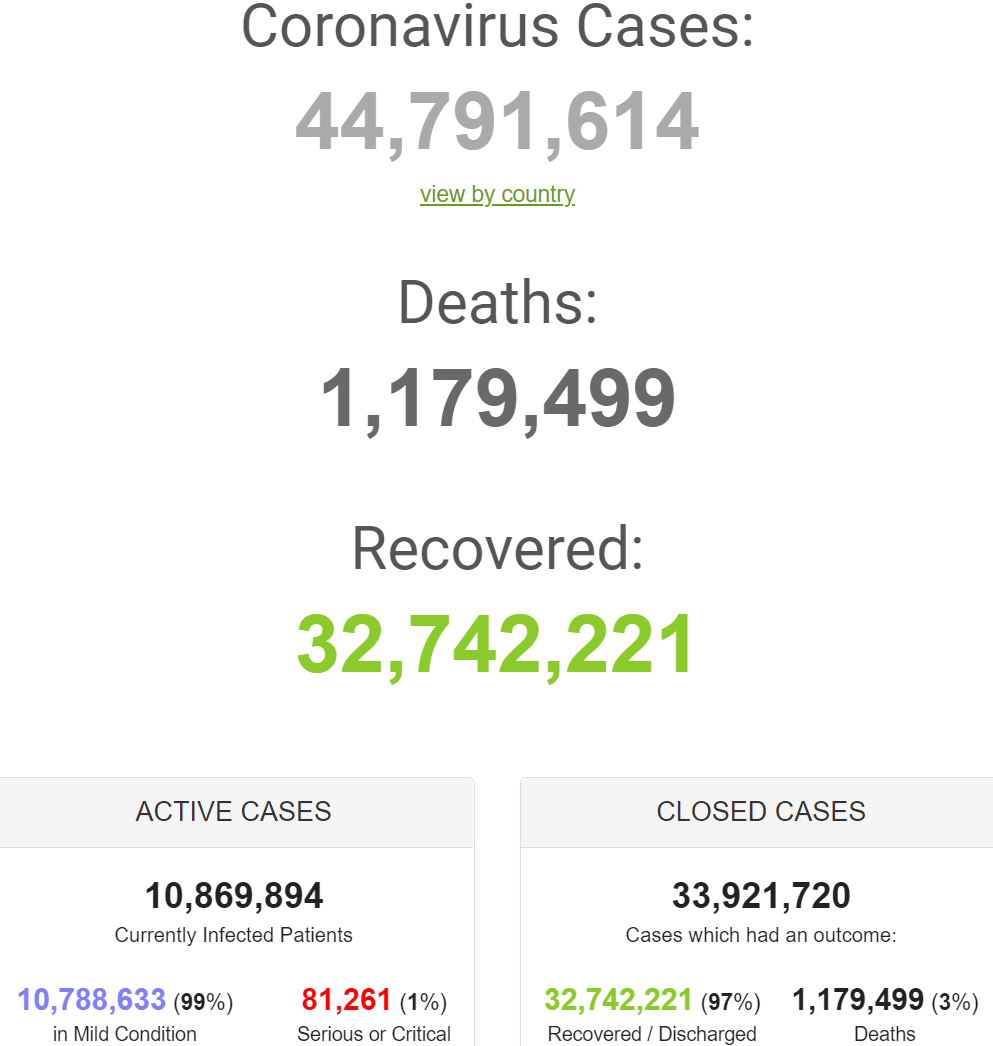
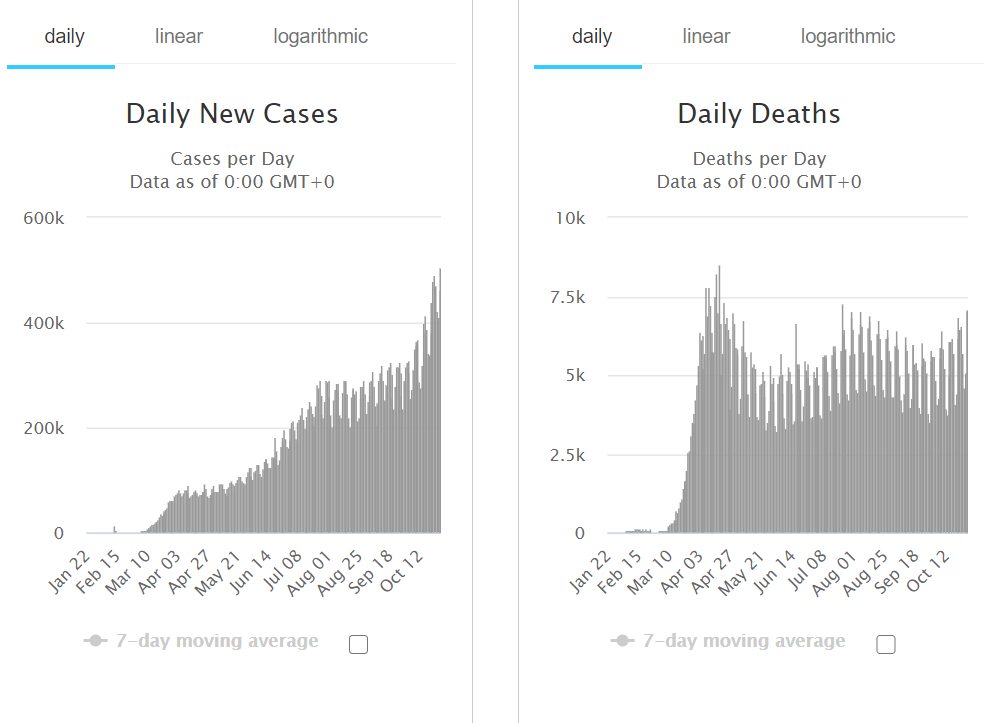
|
Country, |
Total |
New |
Total |
|
World |
44,742,593 |
+504,413 |
1,178,553 |
|
9,120,751 |
+81,581 |
233,130 |
|
|
8,038,765 |
+49,912 |
120,563 |
|
|
5,469,755 |
+28,852 |
158,468 |
|
|
1,563,976 |
+16,202 |
26,935 |
|
|
1,235,132 |
+36,437 |
35,785 |
|
|
1,194,681 |
+19,765 |
35,466 |
|
|
1,130,533 |
+13,924 |
30,071 |
|
|
1,041,935 |
+8,717 |
30,753 |
|
|
942,275 |
+24,701 |
45,675 |
|
|
901,268 |
+5,942 |
89,814 |
|
|
894,928 |
+2,431 |
34,315 |
|
|
719,714 |
+1,863 |
19,111 |
|
|
589,766 |
+24,991 |
37,905 |
|
|
588,648 |
+6,824 |
33,714 |
|
|
505,530 |
+1,005 |
14,032 |
|
|
479,621 |
+16,202 |
10,359 |
|
|
463,951 |
+4,043 |
10,770 |
|
|
403,079 |
+1,493 |
5,861 |
|
|
400,483 |
+4,029 |
13,612 |
|
|
375,174 |
+2,047 |
7,114 |
|
|
368,513 |
+2,305 |
10,027 |
|
|
363,075 |
+7,474 |
6,755 |
|
|
347,289 |
+13,571 |
11,038 |
|
|
346,047 |
+416 |
5,348 |
|
|
330,200 |
+825 |
6,759 |
|
|
319,991 |
+8,102 |
7,202 |
|
|
312,550 |
+826 |
2,494 |
|
|
299,049 |
+18,820 |
4,849 |
|
|
297,013 |
+12,980 |
2,675 |
|
|
225,586 |
+2,699 |
10,032 |
|
|
222,559 |
+5,343 |
6,681 |
|
|
207,718 |
+3,985 |
3,506 |
|
|
164,908 |
+1,716 |
12,608 |
|
|
162,354 |
+1,954 |
887 |
|
|
141,124 |
+172 |
8,672 |
|
|
131,939 |
+250 |
230 |
|
|
131,247 |
+825 |
2,663 |
|
|
129,024 |
+1,400 |
485 |
|
|
128,392 |
+3,960 |
2,395 |
|
|
Dominican |
125,570 |
+562 |
2,232 |
|
123,906 |
+814 |
763 |
|
|
114,434 |
+614 |
1,208 |
|
|
110,832 |
+148 |
1,825 |
|
|
107,030 |
+153 |
6,234 |
|
|
106,553 |
+1,231 |
1,340 |
|
|
106,320 |
+749 |
3,682 |
|
|
98,116 |
+618 |
1,730 |
|
|
95,545 |
+936 |
969 |
|
|
94,820 |
+602 |
1,451 |
|
|
94,623 |
+657 |
2,639 |
|
|
90,876 |
+476 |
784 |
|
|
89,496 |
+3,394 |
1,027 |
|
|
85,868 |
+42 |
4,634 |
|
|
82,651 |
+2,241 |
1,243 |
|
|
81,022 |
+257 |
317 |
|
|
75,845 |
+1,850 |
602 |
|
|
73,321 |
+861 |
1,729 |
|
|
66,141 |
+260 |
558 |
|
|
65,933 |
+2,291 |
1,578 |
|
|
62,371 |
+147 |
1,139 |
|
|
61,942 |
+3,087 |
700 |
|
|
61,290 |
+733 |
1,359 |
|
|
59,434 |
+667 |
1,896 |
|
|
58,874 |
+899 |
823 |
|
|
57,987 |
+7 |
28 |
|
|
57,276 |
+538 |
1,138 |
|
|
57,026 |
+320 |
1,941 |
|
|
54,278 |
+1,879 |
1,153 |
|
|
52,137 |
+988 |
699 |
|
|
51,948 |
+420 |
465 |
|
|
51,851 |
+1,018 |
934 |
|
|
49,072 |
+1,406 |
1,172 |
|
|
48,943 |
+2,887 |
184 |
|
|
45,461 |
+2,760 |
1,197 |
|
|
43,174 |
+1,017 |
715 |
|
|
42,208 |
+1,328 |
803 |
|
|
40,999 |
+2,378 |
493 |
|
|
34,299 |
+1,547 |
603 |
|
|
33,858 |
+1,731 |
253 |
|
|
29,441 |
+801 |
246 |
|
|
28,697 |
+870 |
963 |
|
|
28,215 |
+2,612 |
278 |
|
|
27,554 |
+13 |
907 |
|
|
26,146 |
+103 |
461 |
|
|
20,555 |
+67 |
124 |
|
|
20,040 |
+311 |
493 |
|
|
19,069 |
+403 |
280 |
|
|
17,392 |
+301 |
282 |
|
|
16,285 |
+42 |
348 |
|
|
15,659 |
+775 |
147 |
|
|
15,582 |
+11 |
322 |
|
|
15,378 |
+215 |
354 |
|
|
13,765 |
+18 |
837 |
|
|
12,806 |
+77 |
133 |
|
|
12,138 |
+776 |
144 |
|
|
11,767 |
+146 |
106 |
|
|
11,591 |
+24 |
37 |
|
|
11,211 |
+20 |
305 |
|
|
10,900 |
+40 |
82 |
|
|
10,404 |
+7 |
70 |
|
|
10,074 |
+203 |
275 |
|
|
8,851 |
+64 |
198 |
|
|
8,320 |
+5 |
242 |
|
|
7,605 |
+131 |
126 |
|
|
7,262 |
+831 |
29 |
|
|
5,904 |
+7 |
184 |
|
|
5,886 |
+11 |
116 |
|
|
5,760 |
+75 |
56 |
|
|
5,192 |
+5 |
111 |
|
|
4,455 |
+18 |
37 |
|
|
3,930 |
+113 |
25 |
|
|
3,759 |
+13 |
59 |
Retrieved from: https://www.worldometers.info/coronavirus/
From CNN's Tomas Etzler in Brno, Czech Republic and Lauren Kent
The Czech Republic now has the highest rate of new coronavirus infections and deaths per capita in the European Union, according to the European Centre for Disease Prevention and Control (ECDC).
The country recorded 1,448.7 cases per 100,000 people over the past 14 days, according to a ECDC report released Wednesday. That surpasses Belgium, which recorded 1,424.2 new infections per 100,000 people.
The Czech Republic is also leading the EU for deaths per capita over the past 14 days, with 13.5 Covid-19 fatalities per 100,000 people.
On Wednesday, which was a public holiday in the Czech Republic, the Ministry of Health recorded 12,977 new coronavirus cases. That's down from Tuesday's record high of 15,663 new cases.
As of Wednesday, there were 174,965 active infections in the Czech Republic, including 6,624 patients in hospital. The total death toll stands at 2,675, according to the Ministry of Health.
New health minister: Czech President Milos Zeman will appoint Jan Blatný, the deputy director of the Faculty Hospital in the southeastern city of Brno, as the new Minister of Health on Thursday, according to the President's spokesman. Blatný will be the country's third health minister in the past six weeks. Earlier this year, Blatný tweeted that Covid-19 is just a "worse flu."
From CNN's Tara John and Claudia Otto
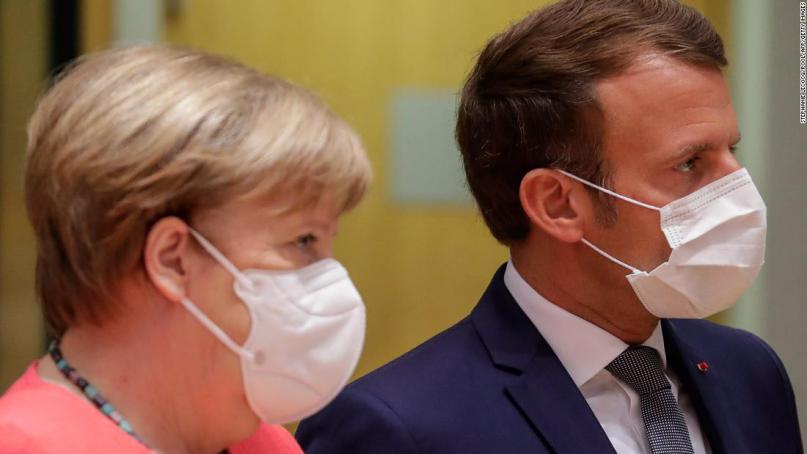
Two of Europe's biggest economies have announced lockdowns in response to spiraling coronavirus case numbers.
France will begin a four-week lockdown on Friday, French President Emmanuel Macron said Wednesday.
His declaration came just hours after German Chancellor Angela Merkel also announced a four-week nationwide lockdown starting next Monday.
Macron announced the French measures in a televised address on Wednesday evening, saying existing restrictions were "not enough anymore." By mid-November, all intensive care beds could be taken by Covid-19 patients unless a "brake" is put on the virus, he warned.
Under the French lockdown, people will need a certificate to move around. Non-essential businesses, restaurants and bars will be closed.
Schools and workplaces will remain open, and care homes visits will be allowed. However French people will only be allowed outside to go "to work, to go to a medical appointment, to care for a relative, to do shop for essential goods and to get some air," Macron said.
"The virus is circulating at a speed that even the most pessimistic had not predicted," he said, adding that the curfew imposed in Paris and other administrative areas did not dent the spread of the virus.
France's lockdown will last until December 1 at "minimum," according to Macron.
German restaurants, bars and clubs will also be closed in order to "avoid a national health emergency," according to Merkel.
People residing in Germany are advised to stay home, avoid travel and "keep their contacts to an absolute minimum," she said. Social contacts will be limited to two households in public. Schools and kindergartens will remain open, but have to take strict hygiene measure to do so.
Germany's restrictions will be reassessed in two weeks time, Merkel said.
Though strict, the new guidelines in both countries are less harsh than lockdowns imposed this spring, which brought Germany and France to a standstill.
From CNN's Ivana Kottasová
Europe is drowning in the second wave of the coronavirus epidemic. Infection rates are skyrocketing across the continent. Governments are imposing strict lockdowns. Economies are shutting down again. But there is a glimmer of hope: The virus, while still deadly, appears to be killing fewer people on average.
Recent case and fatality figures from the European Centre for Disease Prevention and Control (ECDC) show that while recorded Covid-19 cases are spiking in the United Kingdom, France, Spain, Germany and other European countries, deaths are not rising at the same rate.
"The fatality rate has declined, in the UK, we can see it going down from around June to a low point in August," said Jason Oke, a senior statistician at the Nuffield Department of Primary Care Health Sciences. "Our current estimate is that the infection fatality rate is going up a little bit, but it hasn't come up to anywhere near where we were and that's unlikely to change dramatically unless we see a really surprising increase in the numbers of deaths."
Oke has been tracking Covid-19 fatality rates along with his colleague Carl Heneghan of the Centre for Evidence-Based Medicine and health economist Daniel Howdon. Their research shows that, at the end of June, the fatality rate was just below 3% in the UK. By August, it had dropped as low as about 0.5%. It now stands at roughly 0.75%.
"We think it's probably driven a lot by age, but also other factors, like treatment," Oke said.
The lower death rate isn't unique to Europe.
In New York, the death rate for those hospitalized with coronavirus-related illnesses has also dropped since earlier this year, according to a study by a team of researchers at NYU Grossman School of Medicine, published in the Journal of Hospital Medicine. A wider analysis of data from the US Centers for Disease Control and Prevention by the NYU team shows that across the United States, "6.7% of cases resulted in death in April, compared with 1.9% in September."
Retrieved from: https://edition.cnn.com/world/live-news/coronavirus-pandemic-10-29-20-intl/index.html
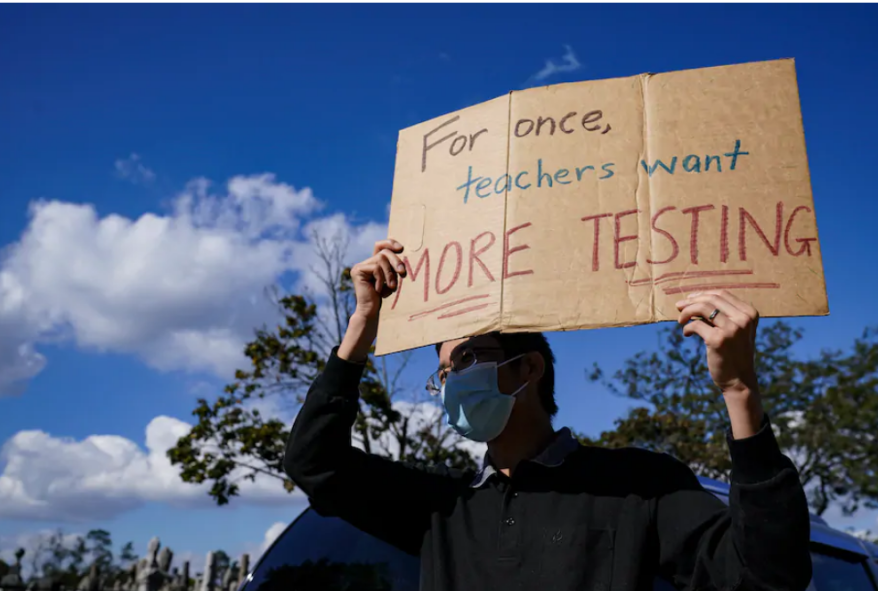
Teachers in New York City protest school reopening plans, calling for more coronavirus testing in the schools. (AP/John Minchillo)
After many years of playing defense, teachers and their unions are on the political march.
The country’s two large teachers unions are working an aggressive ground game to elect Democrat Joe Biden president, and if they succeed, they are likely to benefit from the friendliest administration in at least 20 years.
At the same time, they are exercising enormous influence in school districts across the country that are trying to open buildings for in-person classes. Unions, fearful that schools are not yet safe, have successfully halted or slowed reopenings in several communities and influenced the terms in others.
In Chicago, the teachers union challenged the city’s reopening plans in arbitration. In the District of Columbia, the union has resisted efforts to bring even small numbers of elementary schoolchildren back. Nearby, in Fairfax County, at least one teachers union says school should remain remote for the rest of the school year. And in New York City, the union delayed the opening of school for several weeks while it negotiated terms with the city.
The unions’ mantra has been that teachers want to go back to in-person school, but only when it is safe. In many cases, they have argued it is too soon to reopen, even in places where coronavirus infection rates are low and where administrators say going back is imperative. And while administrators do not always need unions’ permission to open buildings, if teachers do not show up, the plans will fall apart.
“We are influencing, as we should influence, what happens in our schools. I know it’s characterized as we’re keeping the schools closed. I know it feels and sounds like that,” said Becky Pringle, president of the National Education Association, which, with 3 million members, is the nation’s largest union.
Politically, she added, “we’re starting to stand in our power, lift up our voices, and we’re being heard.”
Randi Weingarten, president of the American Federation of Teachers, objected to the notion that teachers are flexing their political muscle. Teachers, she said, are simply fighting “to keep themselves and their kids safe.”
Their position has been fueled, unintentionally, by President Trump, who has demanded that schools reopen for the good of the economy as well as students. That message injected politics to the debate, and drove many Trump opponents, who see his position as reckless, into the union camp.
But the unions have infuriated others, including some parents, who say opening schools is critical, especially for vulnerable children who are struggling or not showing up at all for online classes. They point to data that shows that so far, open schools have not seen a flood of coronavirus infections.
Feared coronavirus outbreaks in schools yet to arrive, early data shows
Keri Rodrigues, president of the National Parents Union, an advocacy group that has clashed with teachers unions, said the unions have “hijacked” the process, even in communities with low rates of transmission.
“Teachers unions have made this their political line in the sand,” she said. “The science doesn’t back it up.”
Both union presidents said that Trump drove teachers to take a tough line by demanding campuses open and then failing to provide the resources needed to make it safe.
Retrieved from: https://www.washingtonpost.com/education/teachers-unions-political-power/2020/10/28/da61cd0c-1853-11eb-aeec-b93bcc29a01b_story.html
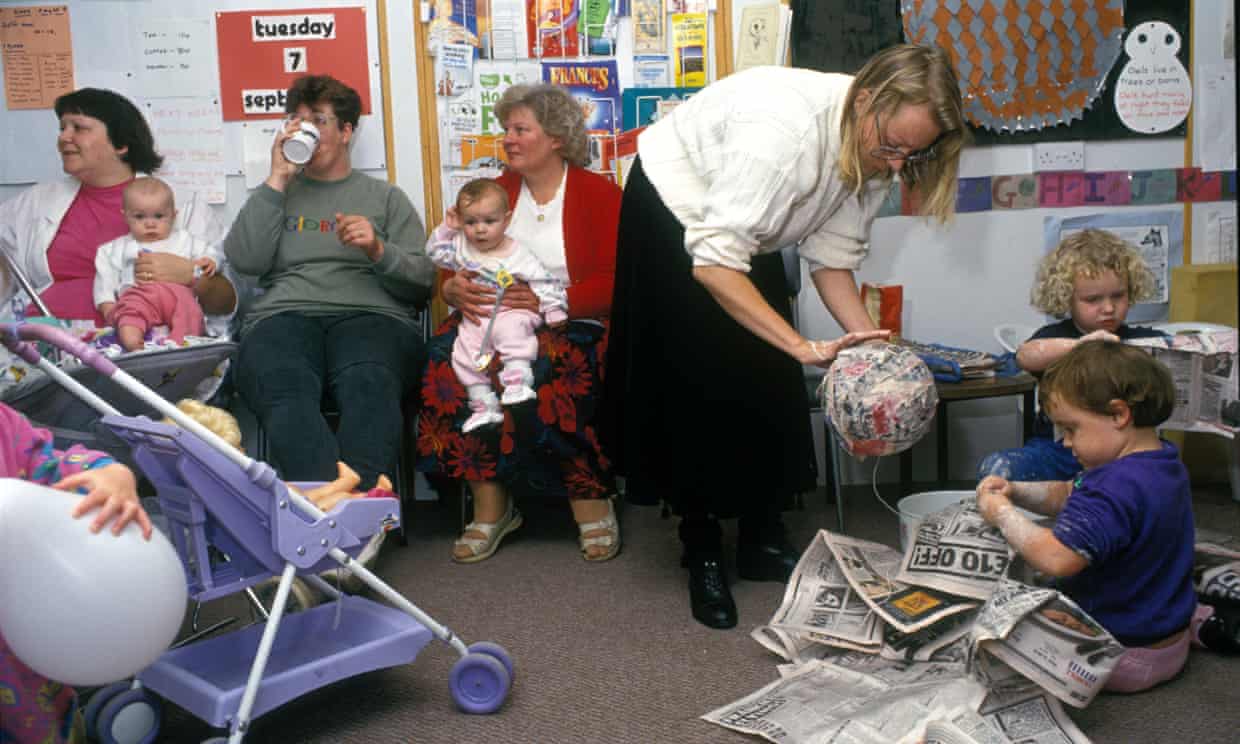
Women and children wait to see the health visitor at a clinic.
A generation of babies born during the Covid-19 pandemic may be at risk because they and their parents are not being fully supported by health visitors in the weeks and months after birth, a coalition of children’s charities has said.
The NSPCC and nine other early-years charities say restrictions to the service and redeployment of health visitors could mean thousands of families do not receive checks they are entitled to.
Only one in 10 parents with children under the age of two saw a health visitor face to face during lockdown, according to a study published in August.
Health visitors support new parents and infants from birth until the child is two, advising on feeding and growth, sleeping, vaccinations and development, and identifying parents who need mental health support. All families are entitled to five checks, the first usually a home visit.
But a survey carried out by University College London in June and July found that in some areas of England as many as 50% of health visitors were redeployed during the first phase of the pandemic. Public Health England recently advised against such redeployment over the winter.
Even before the pandemic, NSPCC research found that one in four mothers had checks conducted by letter, text or phone instead of receiving face-to-face support.
The NSPCC has written to the health secretary, Matt Hancock, to tell him that England’s health visitor programme is not able to meet the challenges of the pandemic. More than 2,000 members of the public have also signed the letter.
The NSPCC’s public affairs manager, Andrew Fellowes, said: “The government is at risk of failing a generation of children if it does not commit to rebuilding the nation’s public health services for families. Before the pandemic began the health visiting service was struggling to support parents and babies across the country, and we know it is not equipped to meet the challenge of the coronavirus pandemic.
“We are urging Matt Hancock to ensure there is sufficient funding and resources, so no families are left behind at a time when they will be relying on this support the most.”
Cheryll Adams, the chief executive of the Institute of Health Visiting, said: “Over the past five years we have seen an average 30% reduction in the number of health visitors in England, accompanied by a massive variation in these losses across the country. The average health visitor caseload is now 500 children, double the recommended number.
“The number of invisible vulnerable babies will have increased and perinatal mental illness is already reported by health visitors to be “sky rocketing”. The erosion of the health visitor role results in kicking the can down the road where the impact is picked up by other much more costly services.”
The NSPCC received almost 1,900 calls to its helpline from people concerned about parental mental health in the six months since April. It has launched a campaign, Fight for a Fair Start, calling on the government to ensure new parents receive mental health support.
The coalition consists of Action for Children, the Association of Child Psychotherapists, Best Beginnings, First 1001 Days Movement, Home Start, OXPIP, the Institute of Health Visiting, NCB, NSPCC and the Parent-Infant Foundation.
Retrieved from: https://www.theguardian.com/world/2020/oct/29/covid-pressure-on-health-visitors-puts-generation-of-babies-at-risk-charities-say
France will reimpose a nationwide lockdown, while Germany will close bars and restaurants and impose other restrictions for a month in a last-ditch effort to protect hospitals from becoming overwhelmed with virus patients as Europe battles a second wave of the pandemic.
For months, European countries have tried to slow the spread of the virus through targeted restrictions aimed at avoiding the tough nationwide lockdowns imposed in the spring. But the measures have not succeeded at halting the surge in cases and hospitalizations, putting more drastic limits on daily life back in play.
This time, though, officials are prioritizing keeping schools and some economic activity open, in stark contrast to the spring, when movement was severely limited across much of Western Europe, and many businesses were ordered to close.
In a televised address on Wednesday evening, President Emmanuel Macron argued that officials had no choice but to impose another lockdown in the face of limited hospital capacity and rising cases across the country.
Mr. Macron stressed that much of Europe was facing a similar situation, “overwhelmed by a second wave that we now know will probably be harder and more deadly than the first.”
As in the spring, most nonessential businesses will close — including bars and restaurants — movement outside the home will be strictly limited, and private and public gatherings will be banned. Universities will pivot to online classes.
Some work sites, including in public services, factories, farms and construction, will remain open. While some people can travel to job sites, working from home will become the norm when possible, he said. Restrictions on retirement home visits and on funerals will not be as strict as in the spring.
“I know the weariness and the feeling of a day with no end,” Mr. Macron said, but he urged the French to remain “united.”
LOCKED-DOWN EUROPE
European governments are imposing some of the toughest rules since the spring.
The lockdown will begin Thursday night and be in effect through at least Dec. 1, with financial assistance to affected businesses and tenants, he said.
About two-thirds of France’s population had already been subject to a 9 p.m. curfew announced two weeks ago. Yet cases have continued to rise: France reported 527 coronavirus deaths on Tuesday, the country’s highest number since April.
European stocks sank to their lowest levels in months on Wednesday amid the echoes of the early days of the pandemic. The Stoxx Europe 600 index tumbled 3 percent to its lowest level since May. In Britain, the FTSE 100 index also fell more than 2 percent, to its lowest since April. On Wall Street, the S&P 500 fell 3.53 percent Wednesday, its biggest one-day drop since June 11.
In Germany, Chancellor Angela Merkel announced on Wednesday that restaurants and bars will have to close their doors to patrons starting Monday. Professional sports teams will play to empty stadiums, while theaters, gyms and cosmetic studios will be shuttered.
The latest restrictions also limit the number of people allowed to meet in public, but supermarkets, stores, schools and day care centers will remain open, Ms. Merkel said.
“Within weeks we will reach the limits of our health system,” Ms. Merkel said at a news conference, after she reached agreement with Germany’s 16 governors on the nationwide measures. “It is completely clear that we must act, and act now, to prevent a national health crisis.”
Ms. Merkel conceded that the restrictions are “burdensome” for a public that has grown increasingly weary of — and rebellious toward — limitations. But she stressed that they were necessary. German hospitals have seen the number of patients double in the past 10 days.
The government will compensate small and midsize businesses affected by the monthlong closures with up to 75 percent of losses, the chancellor said. Financial aid for affected business will be worth up to 10 billion euros.
The German media labeled the restrictions, which are less comprehensive than those imposed in the spring, when schools and most businesses were forced to close, as “lockdown light.”
The heated debate over new restrictions is playing out across Europe. Here’s a look at what’s happening across the rest of the continent:
Portugal on Wednesday made it compulsory for residents to wear a mask outdoors wherever social distancing cannot be guaranteed. The measure, which applies to people age 10 and up, came into force a day after the country registered its second-highest daily rise in cases since the start of the pandemic. Portugal’s government also said it would prohibit people from traveling between municipalities from Oct. 30 until Nov. 3, which will cover a long holiday weekend.
Belgium, which hosts the headquarters of the European Union, now has one of the highest per capita rates of new cases in the world. The Czech Republic, with similar per capita rates, also imposed a nationwide curfew starting Wednesday. Stores, schools and restaurants were closed, while masks were made mandatory in all public places.
In Britain, Prime Minister Boris Johnson is also facing calls for a new national lockdown. The government’s advisory body, known as SAGE, warned him that the second wave could be more deadly than the first, according to The Telegraph.
The European Union on Wednesday called for improved testing and for better coordination of what has been a patchwork of disparate measures in its member countries. “We’re dealing with two enemies,” Ursula von der Leyen, the president of the European Commission, the bloc’s executive arm, said at a news conference. “With the coronavirus itself and corona fatigue.”
Retrieved from: https://www.nytimes.com/live/2020/10/28/world/covid-19-coronavirus-updates
•The number of new cases recorded across Europe and beyond continued to grow, with new highs in cases or deaths in many countries, including Italy, Poland, Czech Republic, Germany, Switzerland, Greece, Portugal, Iran, and Russia.
•AFP said that Tuesday’s daily toll of more than 500,000 infections was a new high - a figure that is likely to be overshadowed by Wednesday’s once the total is known.
•European Commission president Ursula von der Leyen set out a raft of new measures. Her key coronavirus advisor Peter Piot said that the new resurgence in the virus had come back because “we kind of relaxed too much”.
•France is set to announce tough new restrictions, with president Emmanuel Macron due to deliver a televised address shortly and speculation rife about a month-long lockdown.
• Germany will impose an emergency month-long lockdown that includes the closure of restaurants, gyms and theatres to reverse a rise in coronavirus cases that risks overwhelming hospitals, chancellor Angela Merkel said.
South Africa’s president Cyril Ramaphosa went into self-isolation after a guest at a dinner he attended on Saturday tested positive. He is showing no symptoms, according to the government.
•The death tolls in Canada and Turkey went past 10,000. In Argentina, it went past 30,000. Canadian PM Justin Trudeau said: “This is going to be a tough winter”.
On that cheerless note, I’m off. Thanks for many hugely useful tips today and sorry if I missed your email.